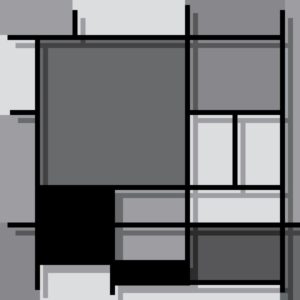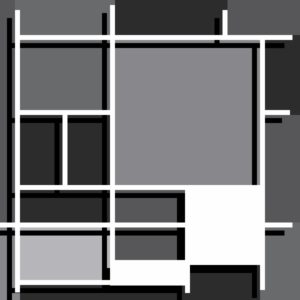There are those who maintain that individual colours do not exist in reality, but are all combined through infinite shades of grey.
I will try to explain a little better without launching into a thesis on the physics of colour, because this project is primarily concerned with painting.
In the realm of physics, this statement is completely true: colours do not exist.
They are simply wave-lengths, or vibrations with greater or lesser frequencies. They are perceived by the central photo-receptors in our eyes (the cones), transformed into bio-electric signals, and sent to the brain, which then interprets them and delivers them in the way that we see them (or believe them to be).
Newton observed that a beam of white light passed through a crystal prism divided up into a rainbow of colours. This is due to the fact that energy sources with different wave-lengths are refracted in different ways when they pass through substances with different density and therefore with different wave propagation.
Colours are often identified by wave-length or frequency. These are two ways of measurement which describe the same phenomenon using different parameters. The first measures in millionths of a millimetre the distance between one crest and another in an electromagnetic wave. The frequency method measures the number of waves passing through the same point within a second. High frequencies correspond to lower wave-lengths, so one is in inverse proportion to the other.
Perception of colour, therefore, is a psycho-physical and subjective dimension, and unique for every sighted individual. In effect, how can we be 100% certain that our particular vision (and consequent interpretation of a specific frequency) is identical to another person’s perception? We clearly cannot be sure, but are granted a certain assurance by the conditioning we have received from our earliest years.
We have stated that colours do not really exist under objective conditions, but are in fact energy frequencies and electro-magnetic waves which we interpret subjectively. From this, a second principle then emerges: that objects, and everything around us, are not in themselves coloured.
If colours are just our interpretation of wave-lengths, the colours that we see in the real world are simply wave-lengths which are reflected but not absorbed. White light is the sum total of all the visible wave-lengths. A light projected onto an object might be entirely reflected, leading our eyes to perceive white; or it may not be reflected at all, and then we see black. Or else an object could absorb certain wave-lengths and reflect others: we perceive the colour that the object has rejected.
Clearly, in the sphere of painting things are not the same: colours are colours and are perfectly identifiable at a universal level (as long as there are no problems with colour blindness).
However, there is a neutral area produced by the scale of grey, and maybe this represents the pure reality of colours.
In fact, this is simply the sum total of all the primary colours, mixed together to form black, and with white (light) added in smaller or larger quantities.
Between the two extremes, black and white, there are thus an infinite number of shades of grey.
The second step, therefore, was to start again from the first work and change its colouring; removing every coloured element and depicting the planes solely in neutral colours in shades of grey. The planes that were grey or black in the original work remained the same, while those in the three primary colours were changed into their respective shades of grey.
This was therefore a different, alternative way of observing the pure entity solely in the scale of grey. Once again, I reversed the work and examined its exact opposite, applying the same inversion technique in shades of grey.

